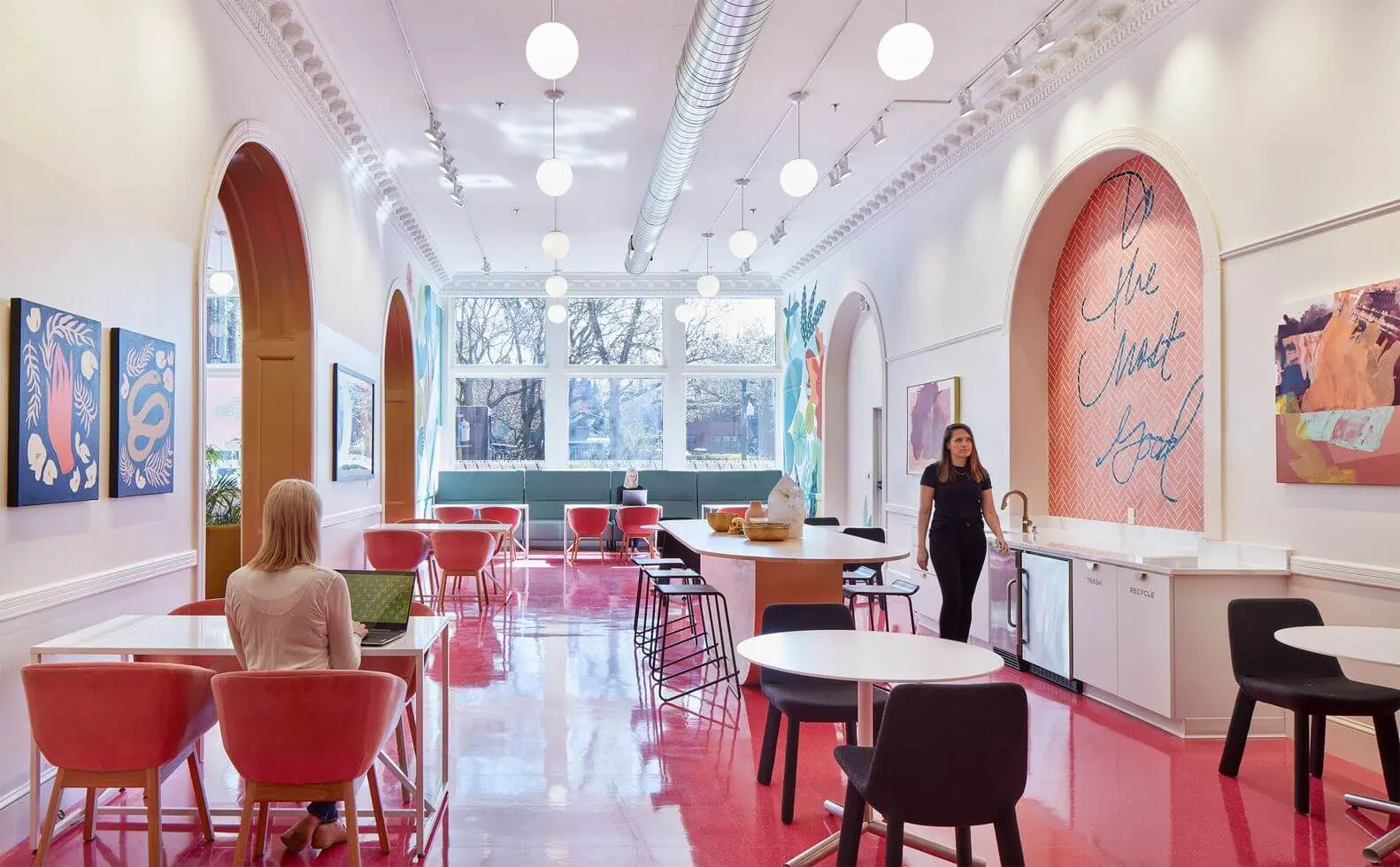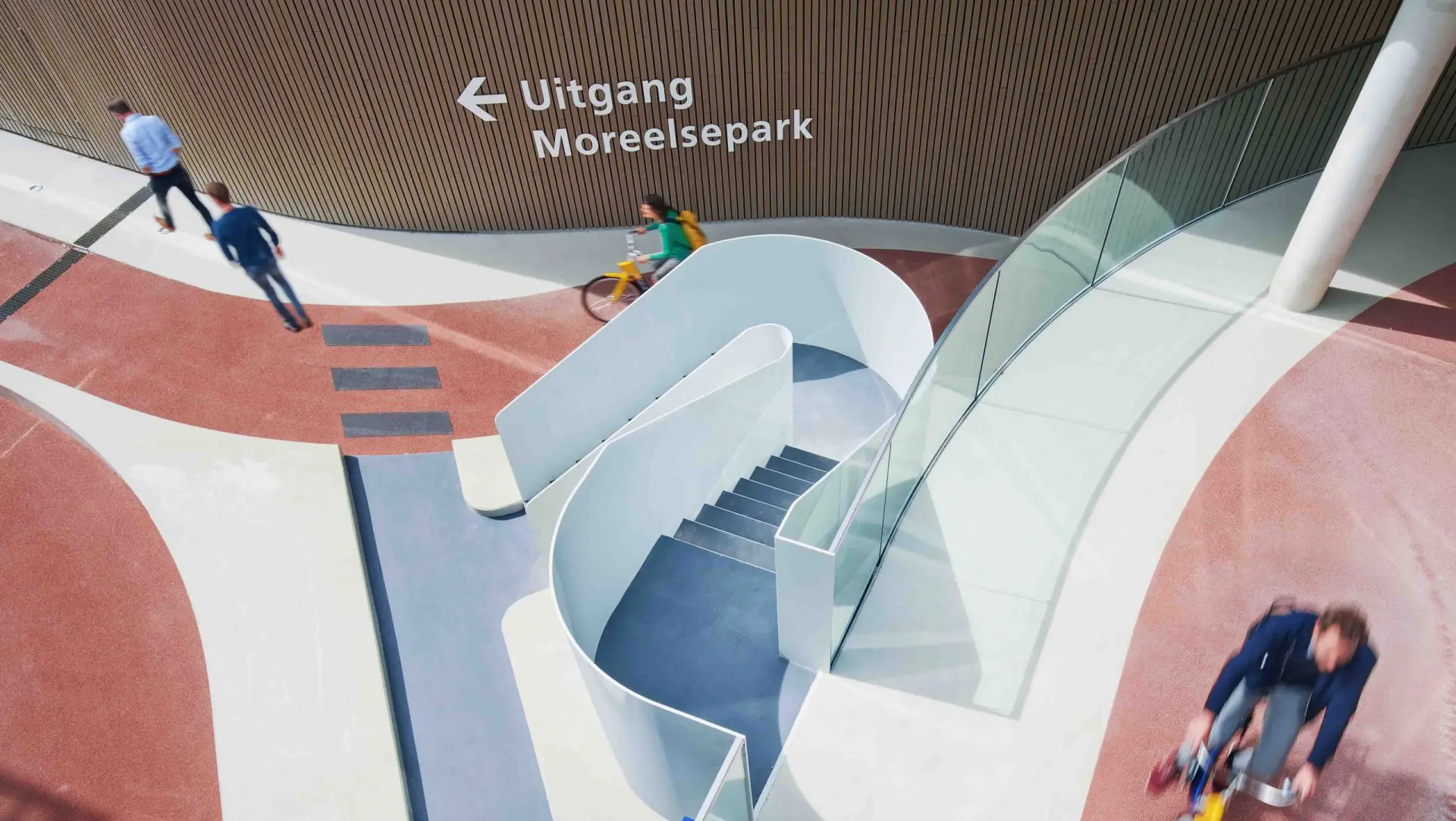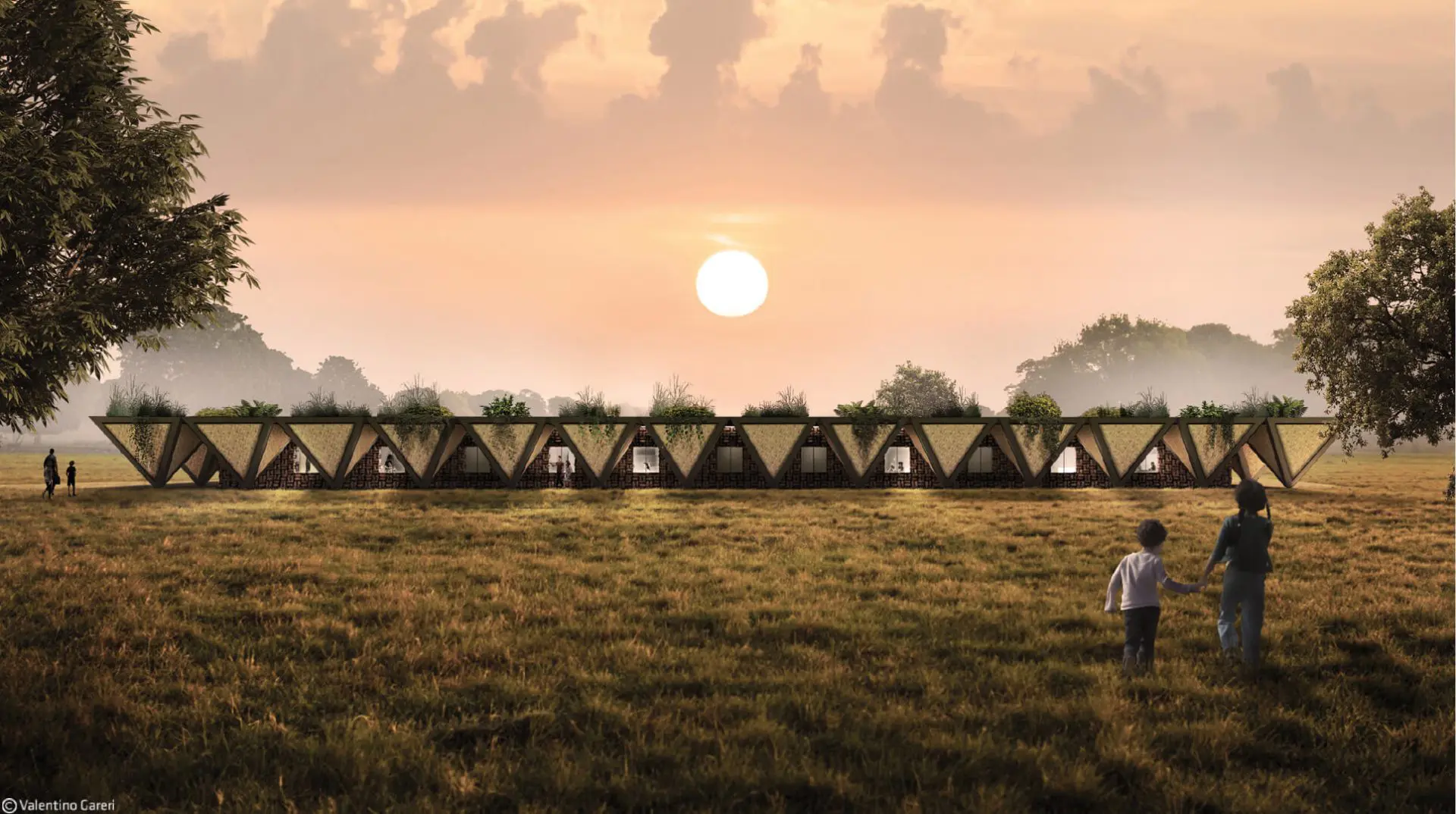Co-working space for a more just and equitable community: The Coven + Blu Dot
The Coven has teamed up with Blu Dot to furnish its joyful co-working space for women, trans and those who identify as non-binary.

The Coven is a co-working space for women, non-binary and trans folks, whose mission is to create a more just and equitable community.
When creating the space, The Coven’s founders teamed up with Blu Dot to embody their vision of a bold, classic, comfortable, modern, and joyful space.
To allow people to settle in to work or just kick up their feet, The Coven’s playful interiors uses Blu Dot’s favorite designs showcasing punchy velvets alongside subdued neutrals and reaffirming that function and look can both be prioritized.
DesignWanted had the opportunity to interview Erinn Farrell, The Coven’s Co-Founder and Chief Creative Officer to discuss effective inclusivity in the work environment, alongside Gwen Goddard, Blu Dot’s Director of Trade + Contract, discovering how furniture’s versatility is key when outfitting a co-working space as Blu Dot did at The Coven.

How did your journey with The Coven begin?
Erinn Farrell: “The 4 of us co-founders were all working at various advertising agencies in Minneapolis but were collaborating on a multitude of efforts to help close the gender gap in senior roles, create and support more equitable and inclusive cultures within agencies, and recruit, retain and support BIPOC women in leadership roles.
In considering the world we wanted to see, we stepped back and started to consider the environments in which we felt the most successful—the most joyful, fulfilled, challenged and celebrated.
We recognized that when we shared space with a multitude of lived experiences, the future we imagined seemed the most possible. So, we began to build the idea from there.”

Why The Coven, why focusing on a community space for women, non-binary, and trans people?
Erinn Farrell: “The Coven is, first and foremost, a space (both physical and digital) that offers physical and psychological safety for folx to connect, grow, and build.
Our membership is open to everyone, but by focusing on women, non-binary, and trans folx, we are boldly centering their experiences and ensuring our offerings are designed FOR them specifically.
Our members often find themselves having to fit into environments elsewhere that were never designed for them—whether that be the inclusivity of the restroom or the people on the Board.
To step into a physical or digital space that intuits your needs, that removes the constant and typical barriers of spaces designed by others, that not only acknowledges your presence—but celebrates it—well, that can be life changing.
We wanted to build a space to hold community and provide folx who are often the “other” a place to be themselves.”
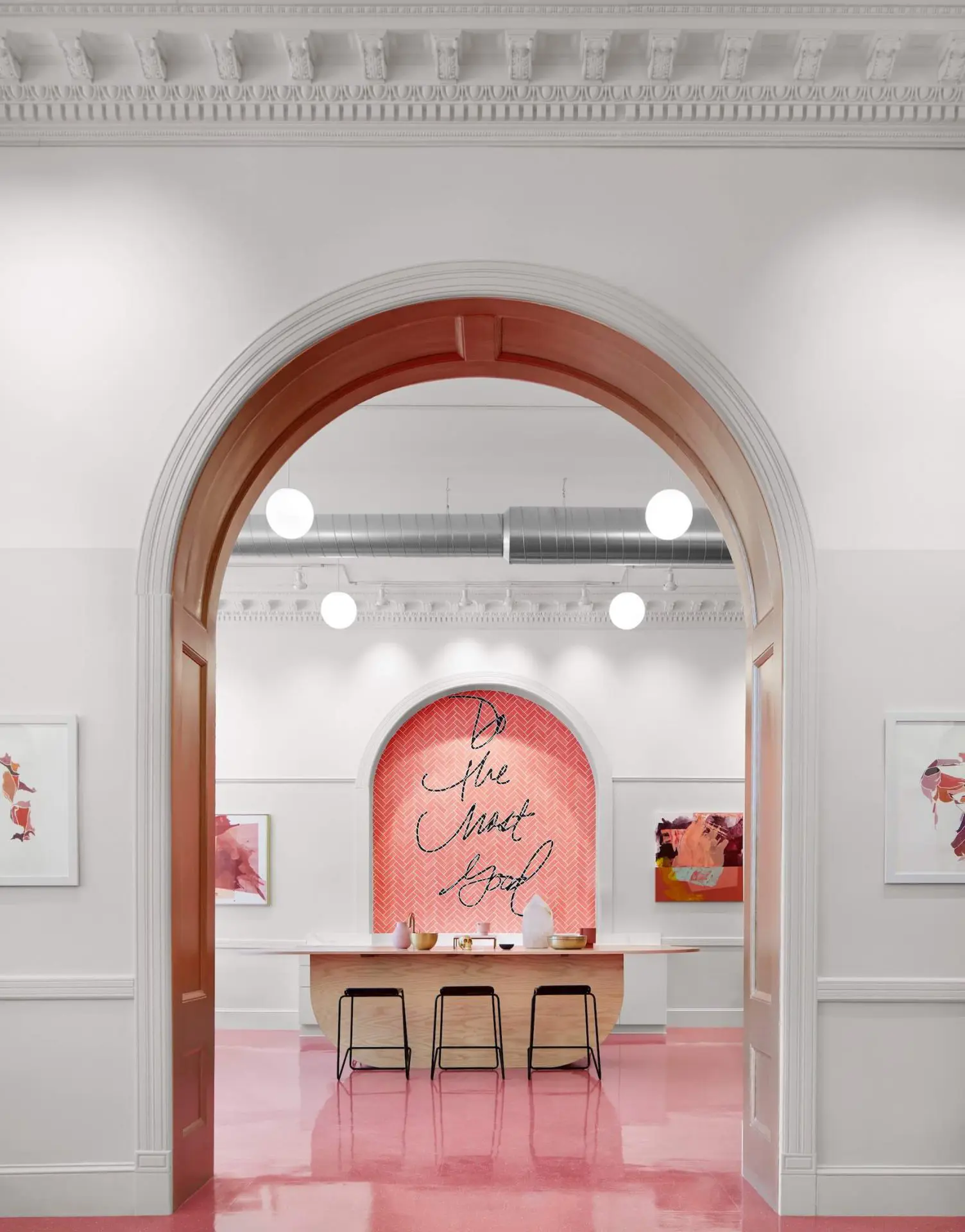
When designing the interior space and the overall experience for The Coven, what kind of mood, atmosphere were you aiming for?
Erinn Farrell: “Simply put, we wanted this space to evoke JOY wherever we could.
Joy itself is an act of resistance and we wanted to help create a space where our members could put down the heavy (metaphorical and physical) weight they were carrying and be whatever versions of themselves they needed to be that day.
What you’ll find in any of our locations is a lot of color, comfort, natural light, REAL PLANTS, and moments of inspiration.
Working with a diverse team of local artisans, we ensured the space was not just a reflection of a singular lived experience but a tapestry of stories, identities, and experiences coming together to bring joy, inspiration, and confidence to all our visitors.”

Your space aims to invite a community that ranges from individual business owners to mid-career working women and late-career execs to early retirees. What is the role played by The Coven?
Erinn Farrell: “We believe in the power of community and the connective tissue that results when a multitude of experiences and industries are brought together.
As co-founders, we found that the broader we cast our net, the more surprising, unique, and bold the insights were.
By creating a space where industry, age, and work approach is not limited and diversity of experience is encouraged, we’ve witnessed the formation of new relationships, friendships, and mentorships.
We design programming, create opportunities for connection, and facilitate introductions to encourage these cross-career stage connections.
We’ve seen confidence take root and personal and professional ideas flourish as the community bands together in support.
We’ve seen businesses start and interesting partnerships form.
One of our favorite moments was watching the CEO of a bank sit down next to a young community organizer and strike up a conversation, which led to multiple projects and collaborations together.”
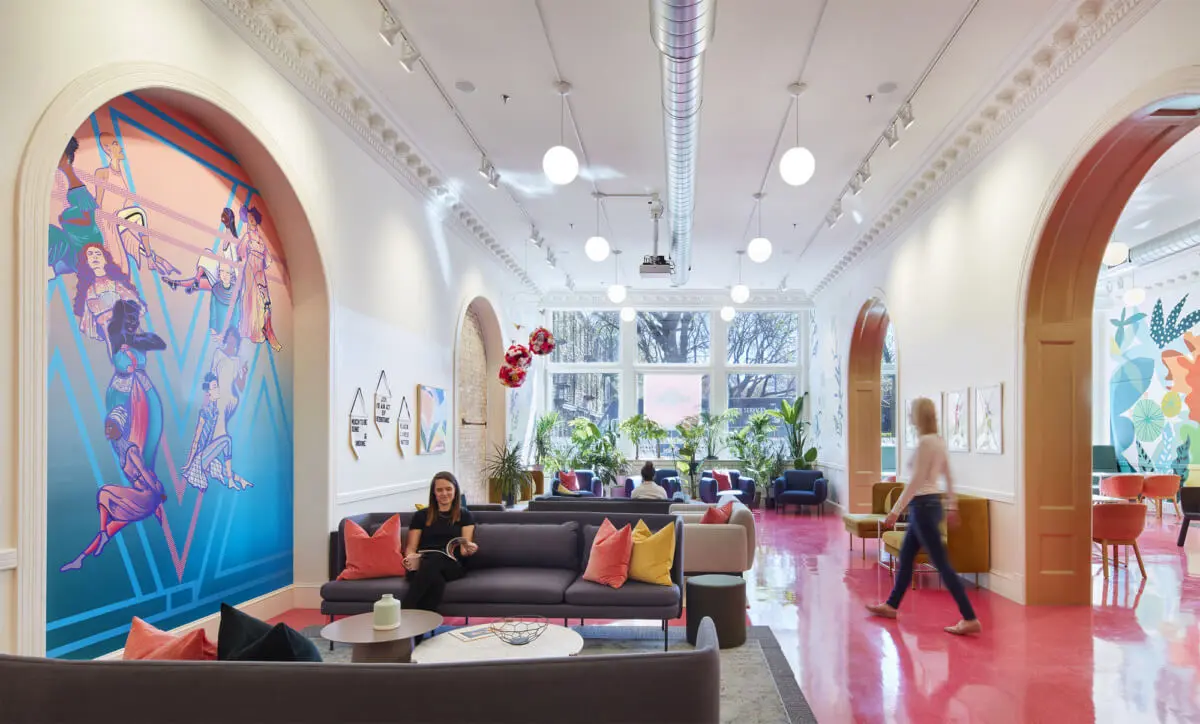
With the increasing trend of co-working places and the current social distancing measures in mind, what are the main trends & future directions within co-working, and what do you think of them?
Erinn Farrell: “I think it’s dangerous to predict, rely on, or look to trends right now. Nothing is normal, and it’s a massive effort to survive as people—much less a business, much less an industry.
Early on in the formation of our business, Councilwoman Andrea Jenkins interrogated anger as the basis of our business and encouraged us to lead with joy: “it’s cool if you’re frustrated by these structures and you’re ready to burn it all down, but what are you going to BUILD in its place?”
This piece of advice is as relevant as ever; when everything is unstable and our sense of normalcy has been brought down, what is the thing we want to build in its place?
For us, that remains an investment in community and an ever-broadening definition of community. It means creating and holding space for the complexities of the moment, while creating safety and space for our members within it.
It means always leading with physical and psychological safety as our barometers for success. It means that our definition of “co-working” may need to continue to evolve as folx comfort levels, economic realities, and work environments shift.
It means being flexible enough to be just a space if that’s what folx want, but also a community if that is what they need. It means always, firstly, listening to the needs of our members and ensuring that our spaces remain equitable, joyful, beautiful, and safe.”
Doubts on the post-pandemic workspace design? Read the ideas of Julie Michielis from global architecture firm Skidmore, Owings & Merrill (SOM): Workspaces designed with empathy and flexibility are the COVID response we need

Blu Dot was among The Coven’s design partners, helping your team furnish a modern yet comfortable coworking space. When choosing among Blu Dot’s designs, how did you and Studio BV choose the ideal furniture for The Coven’s space?
Erinn Farrell: “It’s been a joy to work with Blu Dot from the beginning of our business because the execution of their design aligns so closely with the embodiment of our vision—bold, classic, comfortable, modern, joyful design.
We loved the scale of the furniture; it wasn’t bulky or tall, it literally fit womxn’s bodies well because of the height and depth of the pieces.
They’ve also broadened their offerings to include more and more size inclusive pieces, ensuring all bodies are comfortable.
In addition to the functional elements, we loved the playfulness of color and texture—the fact that you could throw any of these pieces together and it would still look gorgeous was a huge plus.
We’ve literally redesigned and moved every element of each location about 1,000 times, and it always looks like perfection.
Our ultimate design goal was to have spaces that looked like a “modern art museum, where you could put your feet up.” Blu Dot allows us to do so over and over, bringing joyful modernity to the historical buildings we inhabit.
We also worked with Blu Dot because well, they’re rad people.
They are locally-owned and, though they are a huge brand, they threw their weight and belief behind us early. Their support of us in the early stages of our business not only made it feel viable but important.
I cannot tell you how much it means to any business—but especially a business owned and started by women —to have that type of major support.
To watch our business grow and continue to act as a beautiful container to their work makes me all sorts of giddy.”
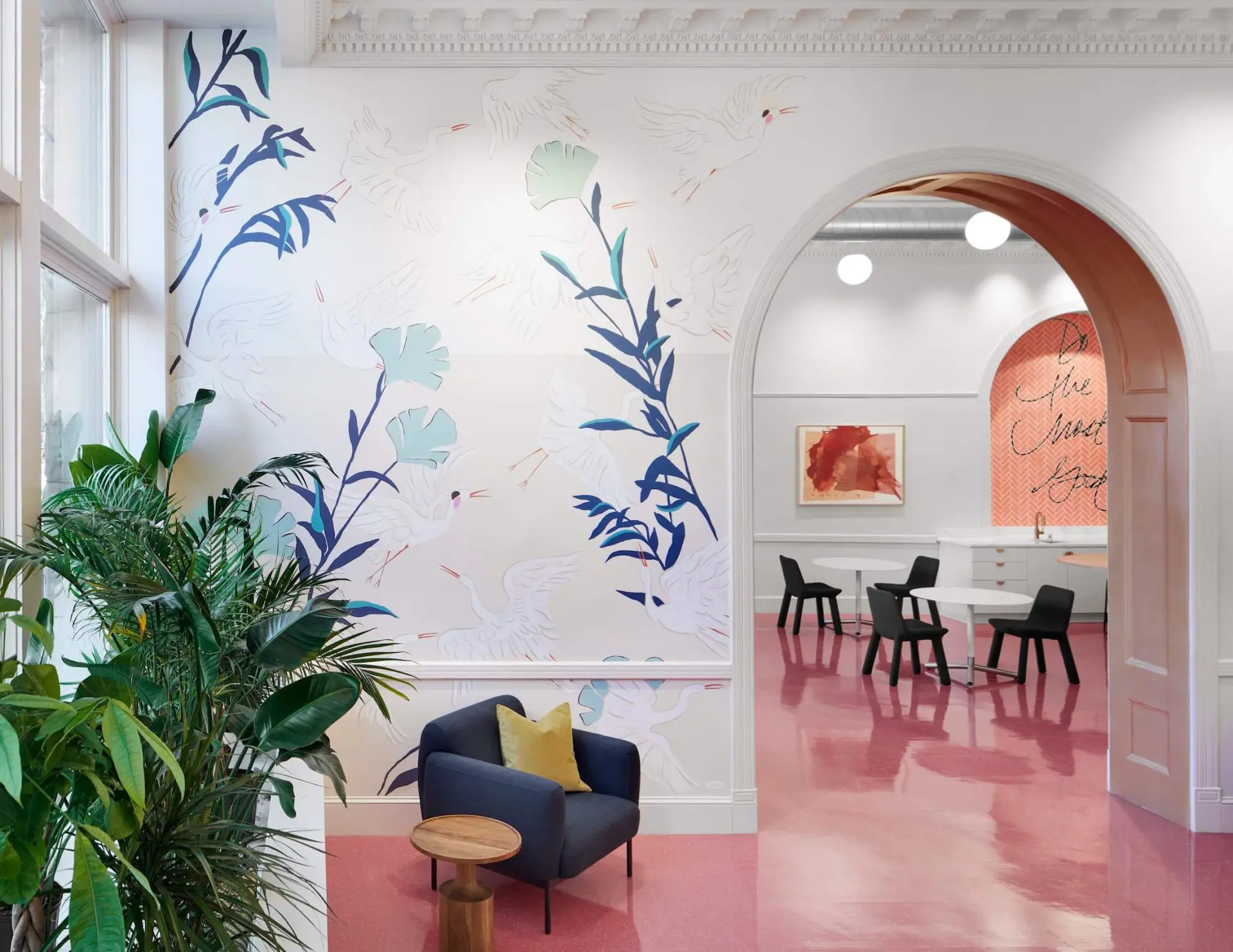
How did your journey at Blu Dot begin?
Gwen Goddard: “After a short tenure as an interior designer, I joined the Blu Dot team in 2009.
This shift in career afforded me the opportunity to work for a long admired and widely celebrated Minneapolis-based design and manufacturing studio.
Much to my delight, about 6 months after accepting an administrative position, an offering was made for me to shift to a job focused solely on the customer service and business development for the Trade + Contract segment of our brand.
After 10 years of program building, with thousands upon thousands of new clients served, I couldn’t be more proud to call Blu Dot home.”

Blu Dot’s furniture is modern, useful, and desirable. In your opinion, what are two key furniture pieces that are perfect for The Coven and any other co-working space?
Gwen Goddard: “Versatility is key when outfitting a coworking space. Our Ready Stacking Counter Stools are easy to stack and store, so The Coven selected these for the bar area to offer flexibility and convenience.
Also, our Bumper Ottomans, which range in size from small to XL, are perfect for any coworking space because of their multi-purpose functionality.
They are great as seating, side table, foot stool, or coffee table.”

Having a demonstrated history of building business in the design industry. In your opinion, what is the role of furniture in a business space?
Gwen Goddard: “When furnishing a business space, the company, its values, and the space’s demands should guide the process—for some, the approach might be function-driven, whereas others will prioritize personality.
Blu Dot’s goal has always been to offer good, unique design with top-notch materials and fabrication, and we aim to help projects (big or small) come to life with our original designs.
We actually just revamped our trade and contract website to provide a wealth of resources and design tools for those furnishing commercial settings.
The Coven nicely highlights our range, showcasing punchy velvets alongside subdued neutrals and reaffirming that function and look can both be prioritized; businesses don’t have to sacrifice one over the other when creating their dream space.”
Furniture plays a central role in the office space, check out Making work more naturally human and less stressful – Interview with Herman Miller Insight Group.

With the increasing trend of co-working places and the current social distancing. What are the main trends & future directions within co-working and what do you think of them?
Gwen Goddard: “Ancillary spaces, which have been on the rise in offices for quite some time, will remain important, allowing businesses the flexibility to create hybrid environments in which individuals can spread out as they slowly return to office life.
Also, versatile and easy-to-clean pieces, such as our new, injection-molded plastic stacking chair, Decade, will be increasingly important in shared spaces and co-working environments, where cleanliness is a priority.”
